Village de Museom à Yeongju (영주 무섬마을)
18.5Km 2021-05-25
31-12, Museom-ro 234beon-gil, Yeongju-si, Gyeongsangbuk-do
+82-54-638-1127
Situé à Sudo-ri (Munsu-myeon, Yeongju, province du Gyeongsangbuk-do), le village de Museom est une charmante bourgade de hanok entouré d’eau. Les rivières de Naeseongcheon et de Yeongjuchon prennent leur source aux monts Sobaek et Taebaek, et convergent vers le village de Museom, l’entourant d’eau par trois côtés. Ce village semblable à une île est non seulement un haut lieu de la culture traditionnelle coréenne, mais il possède également un environnement naturel splendide, complété par une grande plage de sable et une forêt luxuriante.
Célèbre pour les maisons Haeudang et Manjukje (deux des hanoks les plus historiques de la région), le village est également connu pour ses exceptionnelles maisons traditionnelles comme la maison de Kim Gyu-jin et la maison de Kim Wi-jin. Manjukje est située au coeur du village, et elle est également appréciée par les visiteurs internationaux comme étant la plus ancienne maison traditionnelle du village de hanok. Manjukje a été construite en 1666 (lors de la 7ème année du règne du roi Heonjong) par Bak Su (le patriarche de la famille Bak de Bannam).
Près de Manjukje se trouve la maison Manun, construite au début du XIXème siècle et baptisée d’après Kim Hwi-geol, dont le nom de plume est « Manun ». La maison est devenue plus tard la résidence de l’épouse du célèbre poète Jo Ji-hun, auteur de « Byeolli », un poème exprimant la beauté du village de Museom.
Parmi les autres maisons notables, on peut citer celle de Kim Jin-wi (une maison appartenant à des aristocrates), celle de Kim Jeong-gyu (une maison dépourvue de la clôture extérieure traditionnelle) et celle de Jae-yeon, où les écrits de Bak Gyu-su (lettré appartenant à l’école de pensée Silhakpa à la fin de la dynastie Joseon) se trouvent encore aujourd’hui.
Le Pont de l’Unique Rondin constitue une autre attraction du village. Ce pont a représenté le seul lien avec le monde extérieur pendant plus de 250 ans, avant la construction du pont de Sudo en 1979. Il est minuscule en largeur (30 cm) mais On dit qu’il était reconstruit chaque année après avoir été détruit à chaque saison des pluies. Avec la construction du pont de Sudo, le Pont de l’Unique Rondin était inutile, mais il a été reconstruit quelques temps après sous sa forme originale. Pour rendre hommage à l’histoire impressionante du pont, le festival Oeinamu Dari (qui signifie Festival du Pont de l’Unique Rondin) a lieu tous les jours en octobre.
Festival du pont de l'unique rondin de l’île de Museom (무섬외나무다리축제)
18.5Km 2024-11-29
Sudo-ri, Munsu-myeon, Yeongju-si, Gyeongsangbuk-do
+82-54-639-3794
Le village de Museom est situé à l’endroit où la rivière Naeseongcheon (en amont de la rivière Nakdonggang) et la rivière Seocheon se rejoignent. Ainsi, ce village a la particularité d'être entouré d’eau. Le village est appelé « Sudori » ou « Museom », ce qui signifie « une île au milieu des terres ». Ce village traditionnel possède neuf monuments culturels, incluant Haeundang (monument folklorique n° 92) et Manjukjae (monument folklorique n° 93), deux magnifiques demeures anciennes exprimant parfaitement le formalisme simple de l’ancienne noblesse.
Le festival du pont de l'unique rondin de l’île de Museom, organisé tous les ans en octobre, est un évènement incontournable de la région de Yeongju. Le pont de Museom, formé d’une unique planche, est l’un des 100 plus beaux chemins de Corée sélectionné par le Ministère de la Terre, des Transports et des Affaires Maritimes. Le pont fait seulement 23 cm de large, et relie le village à la terre en enjambant la rivière entourant le village. Le festival a pour but de préserver et de promouvoir la culture traditionnelle de la Corée au travers de nombreuses activités folkloriques.
An dong gotak Esanru [Korea Quality] / 안동고택 이상루 [한국관광 품질인증]
18.6Km 2020-09-10
3193-6, Pungsantaesa-ro Seohu-myeon, Andong-si, Gyeongsangbuk-do
+82-54-843-3328 / +82-10-3522-1542
'Andong City in Gyeongsangbuk-do Province is a town of culture and folk traditions where one can trace the long history of eminent families. It is also a symbol of time-honored tradition to the extent that the name Andong reminds people of traditional Korean hanok houses. Isangru, an ancient hanok house with a history of 2,590 years, located in the foothills of Mt. Cheondeungsan, served as a venue for the memorial rite for Kim Seon-pyeong, the progenitor of the Andong Kim clan and a meritorious government official during the reign of King Taejo of the Goryeo Dynasty. Isangru, meaning ‘a tall majestic building built on frosty ground’, is a two-story wooden building with a tiled roof characterized by elegant curves that form a half-hipped shape when viewed from the side. The house consists of two accommodations, Taejangtaesa and Isangru, arranged in a ‘ㅁ’ shape. The large door located in the middle of the ground floor offers an open view of the beautiful natural environment including a pine grove, a pond, and wild flowers. Built in 1750, this hanok house shows its age in its wooden pillars, stone walls, and interiors decorated with wooden engraving on the handrail. Guests can stay in a room heated with wood in winter, or in a tent for a different experience in summer. The house has been well maintained with various repair works, and underwent extensive renovations, including the wallpaper and floors, in 2013. Although it is close to a road, the house is surrounded by old trees, creating the impression that it is situated in the middle of a dense forest. A path runs between ancient pine trees on the road leading to the house. There is a pond with water lilies and white lotus flowers in front of the house, while various species of wild flowers including big blue lily turf, plantain lily, montane aster, and asters come into full bloom around the house in their respective seasons. Fully maintained by the Andong Kim clan, Isangru is a large structure that can accommodate many people and is used to hold clan assemblies. This tall building is also used as a venue for concerts, seminars and traditional hands-on experience programs for students, including tea ceremony, masked dance, natural dyeing, hanji (Korean paper) crafts, and filial duty education programs. The house also offers guests a traditional nobleman’s dining table including various wild vegetable dishes for breakfast. Isangru is popular among Korean and foreign guests who want to experience traditional Korean culture or enjoy a relaxing stay with their parents amid beautiful nature. In addition, it is located between Hahoe Folk Village and Dosanseowon Confucian Academy in Andong, and offers easy access to other nearby tourist attractions including Bongjeongsa Temple, which is the oldest wooden building in Korea and is just three minutes’ drive away, and the two-hour-long Dulegil Trail.
Byeolcheongung (별천궁)
18.7Km 2021-03-30
141, Bongjeongsa-gil, Andong-si, Gyeongsangbuk-do
+82-54-857-4168
It is a restaurant with a hanok interior. This restaurant's signature menu is set menu with grilled salted mackerel. This Korean dishes restaurant is located in Andong-si, Gyeongsangbuk-do.
Jukheon Traditional House[Korea Quality] / 죽헌고택 [한국관광 품질인증]
18.7Km 2020-12-10
24, Taejangjukheon-gil, Seohu-myeon, Andong-si, Gyeongsangbuk-do
+82-10-5217-2174
Located near Bongjeongsa Temple in Andong, Gyeongbuk, the Historic House of Jukheon (Gyeongsangbuk-do Folk Cultural Heritage No. 146) was built in 1886 by renowned independence fighter Kim Ga-jin (1846-1922) and sold to Yi Hyeon-chan (courtesy name: Jukheon) in 1890. The house is now used as the shrine (Jaesa) of his family. It would be a great cultural experience for anybody to welcome the rising sun at a historic building such as this.
Meeting the sunrise from this historical heritage is sure to be the highlight of one’s trip. The house follows the square layout characteristic to the late Joseon period houses. The house itself is surrounded by old pine trees that add to the charm of the house.
Jukheon Traditional House has four Korean traditional rooms, namely the 2-person Jukheon Gallery, Study, Elisabeth Room and the 4-person Jukheon Dongnong Room. The house demonstrates the traditional beauty of Korean houses like the wooden platform hall built upon the stone foundations, screens, and roofs with exposed beam. The screens open to the view of the stone fence and the mountains far away. Elizabeth Room was constructed to commemorate the visit of Her Majesty Queen Elizabeth II of United Kingdom to UNESCO World Heritage site Bongjeongsa Temple in 1999. ‘Queen Elizabeth Road’ stretches from the Jukheon Traditional House to the Bongjeongsa Temple, allowing the guests to trace Her Majesty’s visit with their own steps. A mill with a thatched roof, located to the side of the complex, allows the guests to experience the traditional stepping mill. The pillar of the mill building is adorned with flags from all over the world, testifying to the many international visitors who have stayed at the house. Guests can also enjoy a free breakfast of toast, coffee, and other simple fare on the open hall of the building.
Sogang House
18.7Km 2021-04-09
22, Baraemi-gil, Bonghwa-eup, Bonghwa-gun, Gyeongsangbuk-do
+82-10-9189-5578
The House of Sogang is an approximately 110-year-old house located in the village of Baraemi in Bonghwa-gun, Gyeongsangbuk-do. It was originally built for and presented to Kim Chang-gi (pen-name: Sogang), a well-known local Confucian scholar who served as the head of the Dosanseowon Confucian Academy, and who happened to be the second son of Kim Roe-sik (pen-name: Namho), the great-grandfather of the current owner.
Furthermore, the House of Namho, which is situated behind the House of Sogang, was built for the first son of Kim Roe-sik, one of the richest men in the region, who borrowed money using his entire property as security and donated it to a war chest. He won an official commendation for his role in helping secure national independence in 1977.
The entire village pf Baraemi is composed of traditional square-shaped houses with tiled roofs set amid a clean and peaceful atmosphere, for which it was designated as a Traditional Cultural Village way back in 1922. The name of the village, Baraemi, implies that it was originally situated by the sea, and many shell remains have been found in paddy fields and puddles there over the last 60 years.
The House of Namho is a typical square-shaped house with a tiled roof, and comprises a tall gate, a front courtyard, a sarangchae (men’s quarters) with maru (wooden floor), an inner courtyard, and a bonchae (main building) among its various structures. The main construction material of the house is Chunyang pine wood, which is a rarely used these days. Thanks to the owner-family’s dedicated maintenance and care, the house has been preserved in good condition. As the typical residence of a nobleman of the late Joseon period, the house is decorated with simple interior objects including an old electric fan and a cabinet inlaid with mother-of-pearl.
The house has seven guestrooms in total: The sarangchae consists of the Keunsarang and Jakeunsarang, each with a capacity of 4 to 5 people, and the Araetbang with a capacity of 2 to 3 people. In summer, guests can rent the Jakeunsarang and Sarangdaecheong together, or the Araetbang and Marutbang together, in order to have more space.
In addition, the anchae has a sangbang with a capacity of 3 to 4 people, while the mugangchae consists of Mungangbang 1, which is a red clay floor-heated room, and Mungangbang 2, which can accommodate 2 to 5 people. In summer it is possible to rent the entire House of Sogang, which can accommodate anywhere from 22 to 34 people (if the Sarangmaru and Marutbang are also rented).
Guests of the Keunsarang and Jakeunsarang can use a communal refrigerator, and the entire building has Wi-Fi access. Clean bedding is also provided. Although the house doesn’t provide a breakfast, the owner offers guests sweetcorn, sweet potatoes, fruit, etc. The house is also equipped with a BBQ facility, so guests can enjoy a BBQ party in the evening.
Guests can easily reach various nearby cultural heritage sites, including Muryangsujeon Hall of Buseoksa Temple, Sosuseowon Confucian Academy, which was the first Confucian Academy of Korea, Ojeon Mineral Spring, Daksil Village, and Chukseosa Temple.
The Namho house [Korea Quality] / 남호구택 [한국관광 품질인증]
18.7Km 2020-09-03
21, Baraemi-gil, Bonghwa-gun, Gyeongsangbuk-do
+82-54-673-2257
Located in Bonghwa-eup, Bonghwa-gun, Gyeongsangbuk-do, Bonghwa Namho Gutaek is an old house from the Chosun period designated as Cultural Property Material No. 385. It was built by Nongsan Kim Nam Yeong in 1876 and his son Namho Kim Roe Sik had lived there. Mr. Kim Roe Sik was awarded with a medal for contributing his entire asset to military fund for the Provisional Government of Korea. The spirit of putting others and his country before himself continues until now. Having been built with high-quality materials, the 140-year old Namho Gutaek has barely suffered any deformation. In addition, attentive care added by the descendants has kept the traditional beauty of the hanok intact. One may even feel reverence at the Sosel Daemun (gate). In harmony with the hanok, the garden in the yard and the flower bed sitting next to the wall change color as season changes. It is a great place to feel the scent of old trees and get some rest. In 2016, the shared toilet was renovated in modern style to alleviate any inconvenience for the guests. In the spacious yard, there’s a spot for traditional games such as Tuho, Jegichagi, Neoltuigi, etc. Bonghwa Station (Yeongdong Line) is about a 15- minute walk away; an inner city bus stop in the town, on the other hand, makes a trip to other regions easy.
Tohyang traditional house [Korea Quality] / 토향고택 [한국관광 품질인증]
18.9Km 2020-09-10
43, Baraemi 1-gil Bonghwa-eup, Bonghwa-gun, Gyeongsangbuk-do
+82-10-8575-9036
This historic house has been the home of the descendants of Kim Yeo-byeong, one of the tenth-generation ancestors of its current occupants. Kim Yeo-byeong was born as the fourth son of Kim Seong-gu (courtesy name: Oheon, 1641-1707), founder of Uiseong Kim's Clan at Baraemi Village in Bonghwa and who was a great-great-great grandson of eminent Neo-Confucian official-scholar Kim U-goeng (courtesy name: Gaeam, 1524-1590). The house is comparatively large, featuring a square layout with a lofty five-bay gate building (soseuldaemun) and the main house of seven bays. The main building (anchae) of the house, located against the backdrop of a pine hill, is believed to have been built over 400 years ago before the founder of the family arrived at the village. The family guesthouse (sarangchae) was renovated in 1876 by Kim In-sik (courtesy name: Amun, 1855-1910), who served as the caretaker (Chambong) of Sunghyejeon Shrine, and Grand Master Tonghun before founding Joyang School, which would later become the present-day Bonghwa Elementary School. The name of the house, Tohyang, came from the courtesy name of Kim Jung-uk (1924-1967), a grandson of Kim In-sik. The latter was conscripted by the colonial authority ruling Korea at the time to serve the Japanese puppet state Manchukuo but fled during a military drill to become a freedom activist fighting against Imperial Japan in the Chinese cities of Suzhou and Hangzhou. He returned home after the 1945 Korean Liberation and studied in Jungang High School and Korea University before serving as a budget officer at the Economic Planning Board. The name of the house inscribed on the plaque hung under the roof of the gatehouse was written by his son Kim Jong-gu in honor of his life and achievements. At the front courtyard of the house is a lotus pond including barbecuing equipment and pottery kiln. In the rear garden is a folk playground with facilities and equipment for swinging, traditional Korean seesaw, shuttlecock-kicking, pitch-pot, and top spinning. The front courtyard also features rustic ceramic pots and rooftiles bearing poetic passages written by the mistress of the house who is a prize-winning poetess. The house provides visitors with an opportunity to experience traditional Korean cultural heritage such as pottery, calligraphy, poetry, and traditional musical instruments. Rich with the heritage of traditional Korean culture and lifestyle, the Historic House of Tohyang guides visitors to refreshment and healing obtained from the legacy of the peaceful rural life of days gone by.
Manhoegotaek [Korea Quality] / 만회고택 [한국관광 품질인증]
18.9Km 2020-09-08
51, Baraemi 1-gil, Bonghwa-eup, Bonghwa-gun, Gyeongsangbuk-do
+82-54-673-7939, +82-10-7424-7280
Manhoe Historic House is located in the village of Baraemi, whose name means “a village under the sea.” As a place where literary and intellectual endeavors have flourished since ancient times, Manhoe Historic House’s representative structure is Myeongwolu Pavilion, where ancestors studied and recited poetry amid the beautiful landscape of Sobaeksan Mountain. It is said that about 1,000 poems were composed at the pavilion in the old days.
The house is also the birthplace of the independence movement in Korea. Local Confucian scholars led by Independence activist Kim Chang-suk gathered together at the pavilion right after the March 1st Movement in 1919 and wrote the petition for Korea’s Independence, which was eventually submitted to the Paris Peace Conference. Recently, many hundreds of letters exchanged between independence activists were also discovered at the house.
The house is a square-shaped hanok structure consisting of a ‘ㄷ’-shaped anchae (women’s quarters), a ‘ㅡ’-shaped sarangchae (men’s quarters), a jungmunganchae (middle gate building), and a courtyard. The anchae, which is over 320 years old, has been inhabited by the descendants of Kim Geon-su, a civil official of the late Joseon period, for six generations, The sarangchae, which is over 200 years old, was added to the original house at a later date.
The house was mainly built with red and solid Chunyang pine wood, and is well preserved as a result. The sarangchae has a half-hipped roof, and comprises a sarangbang (main room), daecheong (main floored room), geonneonbang (a room opposite the main room), and toenmaru (a narrow wooden porch running along the outside of the building). The guestrooms of the sarangchae and jungmunganchae include the Sarangbang, Seonangsil, and Baraemisil Rooms, of which the Sarangbang and Seonangsil are equipped with an individual indoor bathroom.
In particular, the anchae is a cozy well-insulated building comprising a daecheong in the middle, a sangbang room on the left, and a gobang (storeroom) and anbang (main room) on the right.
Every room of the anchae is decorated with paintings by the owner’s daughter, fabric artworks, and antique wooden furniture. The anbang, which has an attic and indoor bathroom, can accommodate up to eight people. Guests of the sangbang and gobang need to use the external bathroom.
Right next to the house is a farm covering an area of 6,600m2 where over 100 kinds of crops are cultivated organically, including wildflowers, sweet potatoes, tomatoes, corns, peanuts, salad leaves and other vegetables, which are available for guests. Although the house doesn’t provide a breakfast, guests can pick vegetables in the field and cook them in the communal kitchen or at the BBQ facility in the outer yard. Meanwhile, the nearby Songyigukbapjip restaurant specializes in the delicious local dish made with pine mushrooms.
The house provides a variety of traditional experience activities including Tuho (stick throwing), Seunggyeongdo (chess), Neolttwigi (Korean jumping game similar to see-saw), Sijo composition (traditional Korean three-verse poem), a traditional musical instrument experience (six-stringed Korean zither, seven-stringed instrument, gong, etc.), and a woodblock printing experience.
Ongcheon 21segi Jjinppang (옹천21세기찐빵)
18.9Km 2021-03-24
959-7, Gyeongbuk-daero, Andong-si, Gyeongsangbuk-do
+82-54-859-7058
This is a place where you can enjoy unique steamed bread at an affordable price. This restaurant's signature menu is steamed bun with red bean filling. This Korean dishes restaurant is located in Andong-si, Gyeongsangbuk-do.
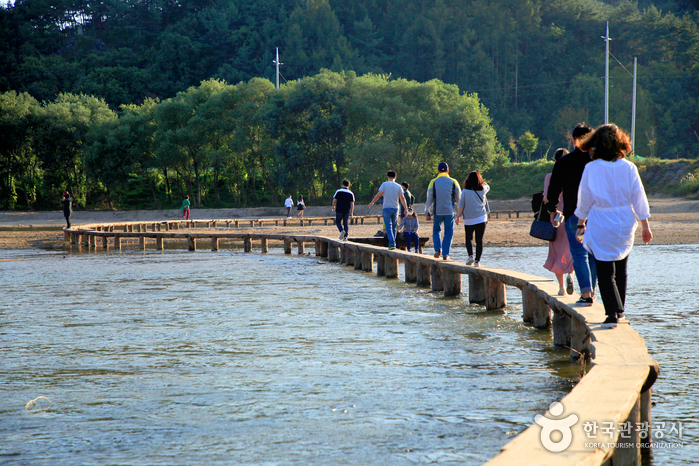
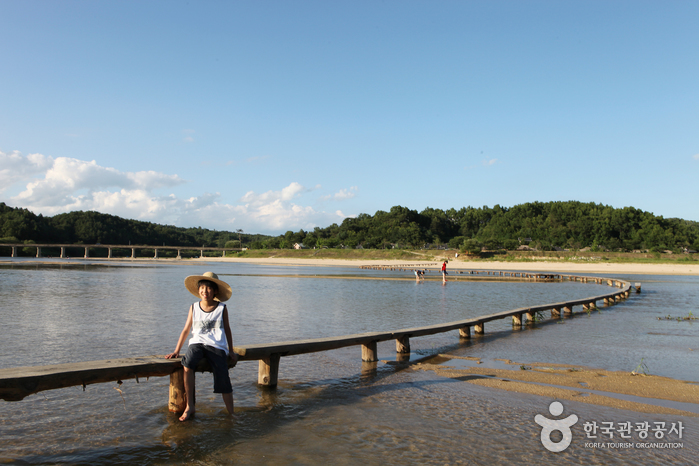
![An dong gotak Esanru [Korea Quality] / 안동고택 이상루 [한국관광 품질인증]](http://tong.visitkorea.or.kr/cms/resource/65/2579465_image2_1.jpg)
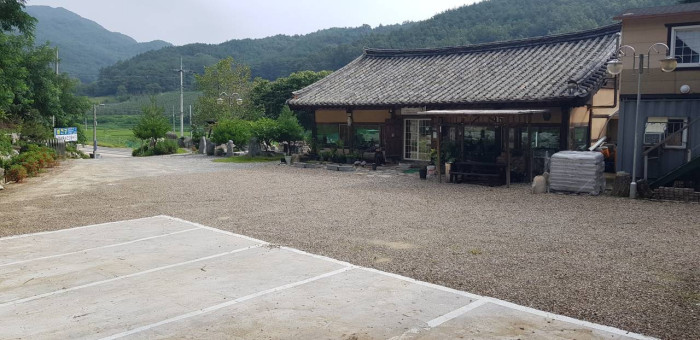

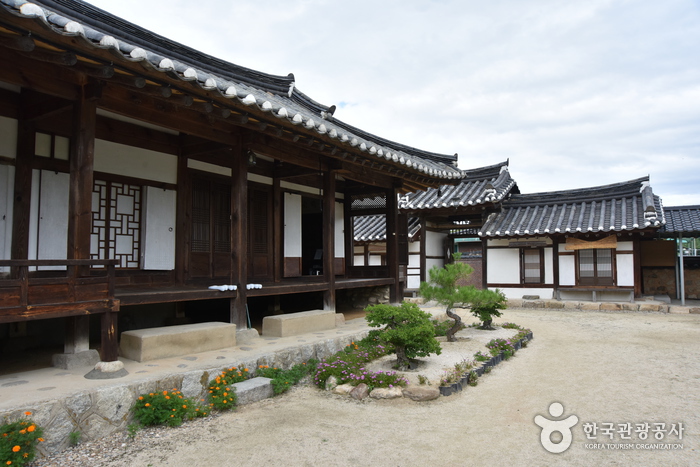
![The Namho house [Korea Quality] / 남호구택 [한국관광 품질인증]](http://tong.visitkorea.or.kr/cms/resource/90/2626090_image2_1.jpg)
![Tohyang traditional house [Korea Quality] / 토향고택 [한국관광 품질인증]](http://tong.visitkorea.or.kr/cms/resource/57/2627457_image2_1.jpg)
![Manhoegotaek [Korea Quality] / 만회고택 [한국관광 품질인증]](http://tong.visitkorea.or.kr/cms/resource/64/2579364_image2_1.jpg)
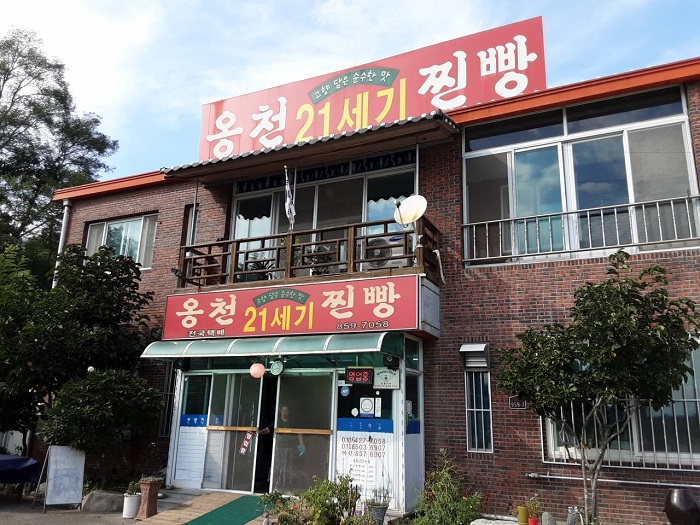
 Français
Français
 한국어
한국어 English
English 日本語
日本語 中文(简体)
中文(简体) Deutsch
Deutsch Español
Español Русский
Русский